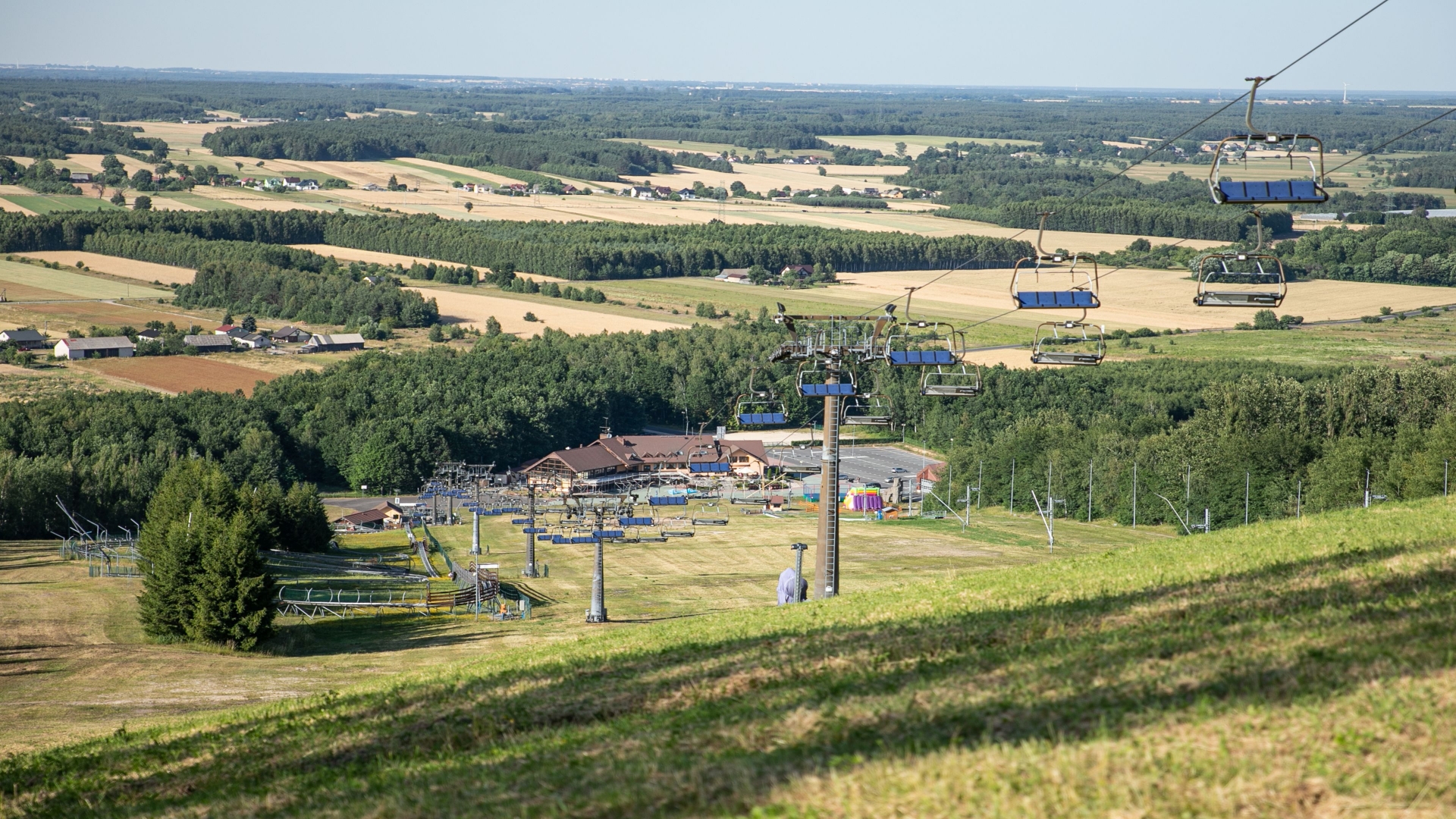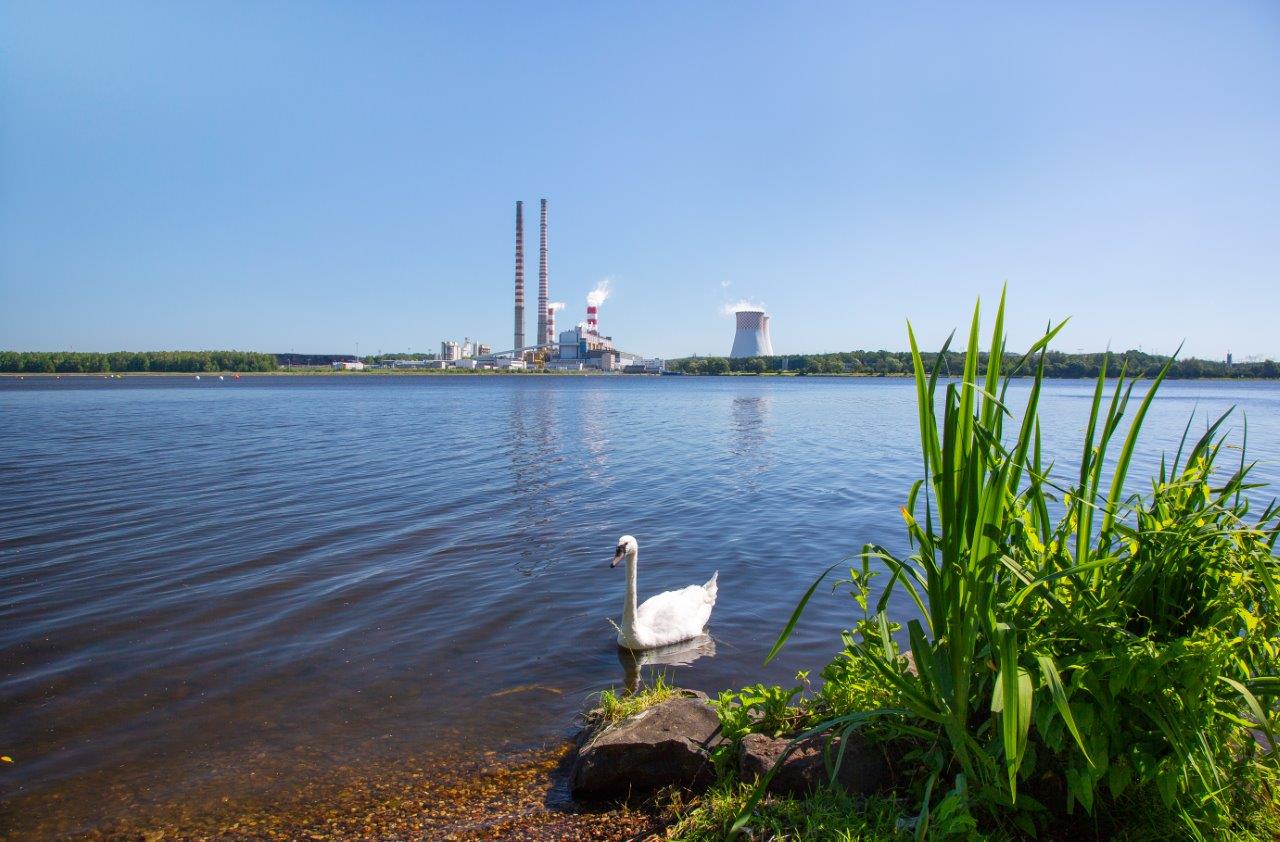- forest, woodland direction – internal dumps of the Bełchatów field,
- forestry, recreational and sports, agricultural (cultivation of energy crops), economic (construction of a wind farm) – the external dump of the Szczerców field,
- water direction – mining pits of field Bełchatów and field Szczerców,
- recreational and sports facilities and wooded areas in coastal areas.

-
3-3
Land rehabilitation is one of the most important measures for restoring the use and natural values of post-mining areas and for recreating or shaping new environmental features. It is also aimed at ensuring biodiversity.
The activities carried out include the following stages:
- preliminary (preparatory) reclamation – concerns the recognition of factors determining the correct course of rehabilitation. At this stage levelling measurements are taken, mining maps are drawn up and cost and project documentation is prepared,
- basic (technical) rehabilitation – refers to macro-levelling covering earthworks, consisting in proper shaping of the heap into a system of slopes and shelves, regulation of water relations by means of hydrotechnical facilities and equipment and reconstruction or construction of access roads,
- detailed (biological) rehabilitation – concerns improvement of air and water properties of soil, elimination of its excessive acidification, supplementation of missing nutrients, introduction of herbaceous and woody vegetation recreating biological conditions of the area and protection against surface erosion,
- post-rehabilitation treatment – includes the care of seedlings and the replenishment of outcrops.
First of all, the works eventually shape the slopes and ledges of the heap, protect the slopes by controlled drainage of rainwater, consolidate the top layer of soil and protect the area against erosion, reduce the volume of rainwater runoff by increasing soil retention, improve the quality of water flowing from the heap and reduce fugitive emissions.
Unique land rehabilitation in Poland



The Bełchatów mine conducts large-scale rehabilitation activities.
One of the basic directions of recultivation carried out at present is forestry, which has a positive impact on the landscape, climate, improves water retention capacity, reduces water and air erosion.
So far, it has already rehabilitated more than 2,300 ha of post-mining land and handed over more than 1,700 ha of rehabilitated, forested land to the State Forests.
Preliminary estimates indicate that approx. 5,500 ha of land (including protective strips next to water reservoirs) will be eventually handed over for forest management.
The rehabilitation of post-mining areas at the Bełchatów mine is carried out on the basis of a technological project for the Bełchatów field and the Szczerców field, as well as on the basis of annual detailed technical projects for individual areas.
Góra Kamieńsk is a flagship example of comprehensive reclamation efforts. It is the highest hill in central Poland at 395 m above sea level, which was formed from 1,354 billion m3 of overburden removed in the process of uncovering successive layers of lignite.
Reclamation here consisted of soil restoration and the planting of forests, which today are home to many plant and animal species. Through recreational and sports development, Góra Kamieńsk has become one of the biggest tourist attractions in the region and central Poland.
A ski lift, hiking and cycling routes and a 620-metre-long sledge run make Góra Kamieńsk an important point on the map of summer and winter sports enthusiasts. In addition, a 30 MW wind power plant has also been built on the mountain.
PGE Górnictwo i Energetyka Konwencjonalna has also completed the formation of a second heap, this time of the Szczerców Field. This process took 17 years, and resulted in the creation of the “twin” Góra Kamieńsk. The heap was formed from almost 1 billion m3 of overburden located above lignite seams. Currently, the mountain has an area of 1,114 ha and a relative height of approx. 170 m.
The reclamation of the spoil heap is being carried out in a forestry direction with a recreational function thanks to the planned construction of forests, cycle paths, a golf course, autodrome, hippodrome and ski slope. A photovoltaics farm will also be built on top of it.
Within the area of the Bełchatów field work is being carried out on corrections and additions to afforestation from the rehabilitation carried out in previous years.
Ultimately, the main rehabilitation task for the Bełchatów mine will be the water reclamation of both end pits, combined with the creation of a large leisure complex.
The scale of difficulty of this project is unparalleled in Poland. Once the mining is fully completed, the Bełchatów mine may become an important place for water sports enthusiasts.
Over 4,000 ha will form a reservoir on which economic or recreational and sports activities can be conducted in accordance with local needs.
In 2022, the Bełchatów mine obtained administrative decisions to declare reclamation completed in forestry direction for 143.3 ha of land in the Bełchatów Field and 25.8 ha of land in the Szczerców Field.
The main and leading direction of reclamation at the Bełchatów mine is forestry. Work is carried out on an ongoing basis along with the progress of mining operations. For the external spoil heap of the Szczerców Field, sodding, which consists of enriching the soil layer with plants (sowing the area), is carried out on the topsoil as part of biological cover.
The timetable for 2022 was implemented as planned. On the internal dump of the Bełchatów Field, afforestation was carried out on an area of 13.8 ha. On the external dump of the Szczerców Field, an area of 68.6 ha was afforested and sodded. Additionally, a stand of trees was replenished on an area of 18.8 ha.
Oxygen generating area in the municipality of Bogatynia
In the case of the Turów mine, the rehabilitation of the external dump, which has been carried out since 1960s, is aimed at target forest management, where mining operations have been finished. The rehabilitated external dump of the Turów Mine is a forest complex of the area of almost 22 km2 which constitutes invaluable oxygen generating area of the Bogatynia municipality. It is also environmentally diversified, where habitats and ecological corridors are created (habitats of very numerous representatives of both plant and animal world, including many rare and protected species). It is the largest site of its kind in Poland and one of the largest in Europe.
Ultimately, the Turów Mine pit will be rehabilitated in the water direction and all areas above the water table will be rehabilitated in the forest direction.
The effects of the land rehabilitation works carried out contribute mainly to the improvement of the quality of basic environmental components, i.e. air, water and soil. Uncontrolled emission of dust from the heap decreases with the increase of the area of forested land. The anthropogenic forest complex formed on the external dump contributes significantly to the increase of forest cover in the industrialised region. Despite the fact that the age structure of the afforestation is characteristic of young forests, it is already an important landscape and climatic factor for the municipality of Bogatynia.
The main task of the reclamation carried out at the Turów Mine is the formation of a biotope for the forest management of post-mining areas, taking into account the diversity of the micro-habitats formed, which increase the value of the ecosystem. This occurs through the interaction of anthropogenic and biological factors on the raw formations, which are the bedrock of the resulting soils.
In 2022, biological reclamation of the area leased from the State Forests (Pieńsk Forest District) was carried out in accordance with the Forest District’s guidelines. The following plantings were made: bearded birch – 21,600, black alder – 13,000, Scots pine – 8,700, common hornbeam – 4,300.
In addition, basic mineral fertilisation was carried out on the afforested area.



Land rehabilitation at PGE Energia Ciepła
Once the landfill sites in an area have ceased to be used, the company restores the land’s use values and its amenity and nature values. Vegetation is introduced, grass covers and tree plantings are made. The areas can then be worked on to integrate them into their surroundings.
Where this is possible, measures are planned to restore economic functions to the areas by gradually extracting stored waste and putting it to economic use. The levelling works carried out are intended to make it possible to adapt the land for various economic functions of an industrial, service or municipal nature.
At present, there are 15 storage sites with different operating statuses in the PGE Energia Ciepła branches:
- operated,
- closed, being prepared for reclamation,
- rehabilitated.
An example of the restoration of land use values is the process of recultivation of the now-unused combustion waste landfill in Gorzów Wielkopolski, which began in 2021. The rehabilitation of the inactive landfill of non-hazardous and inert waste will be carried out in accordance with the relevant administrative decisions and the technical design developed in this respect.
The company is preparing a plan for a strategic approach to the use of former landfill sites for, among other things, the development of PV and other renewable energy sources. This will restore the functionality of these sites and also contribute to increasing the area for increasing the share of RES in the energy mix.
